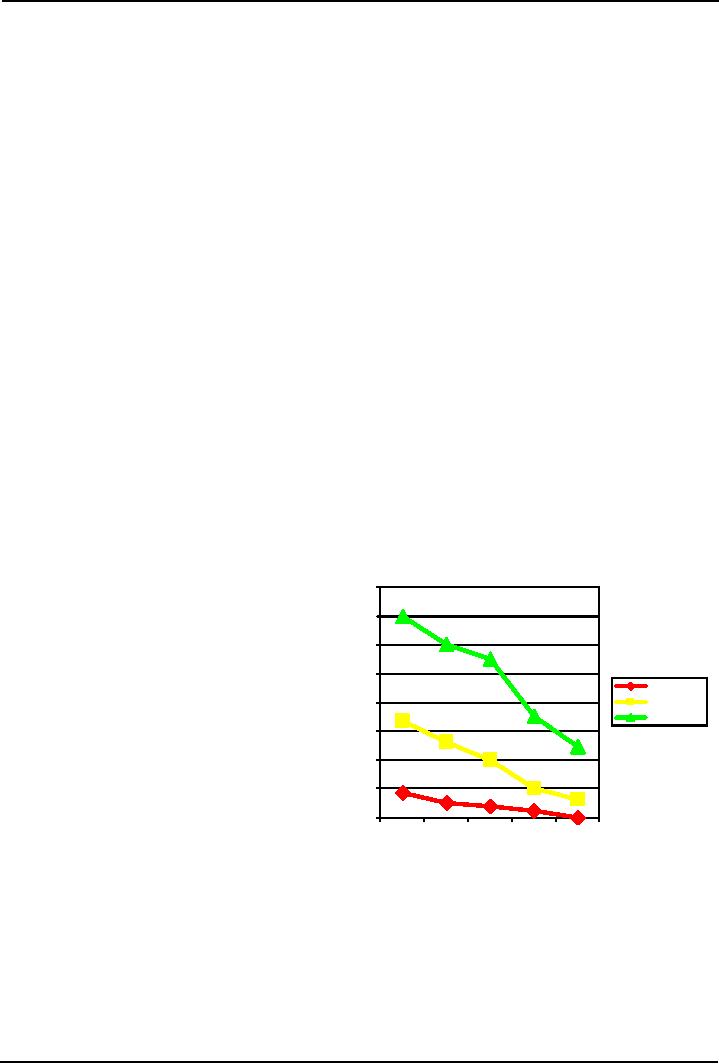 |
SOCIAL PSYCHOLOGY APPLIED: SOCIAL PSYCHOLOGY IN COURT |
| << INTERPERSONAL POWER: LEADERSHIP, The Situational Perspective, Information power |
| SOCIAL PSYCHOLOGY APPLIED: SOCIAL PSYCHOLOGY IN CLINIC >> |

Social
Psychology (PSY403)
VU
Lesson
43
SOCIAL
PSYCHOLOGY APPLIED: SOCIAL
PSYCHOLOGY IN COURT
Aims:
·
To
understand the use of social psychology theories and
principles in court and legal
settings
Objectives:
·
To
discuss the persuasiveness of eyewitness
testimony.
·
To
describe other factors affecting
juror's judgments
Section
V: Social Psychology
Applied
Social
Psychology Applied is not a
separate section as far as syllabus of
social psychology is concerned.
Instead
it is based on the theories and
principles of social psychology
that we have studied so far
in
different
sections of our syllabus,
for example, person
perception, attitude formation,
persuasion,
interpersonal
interactions, and so on. Although
knowledge of social psychology
can be applied in a
variety
of
social settings, and fields of human
interaction, we will specially
discuss two areas where
this
knowledge
is very effectively
applied:
·
Social
Psychology in Clinics
·
Social
Psychology in court
Social
Psychology in Court
Chapter
Summary
This
chapter focuses on social psychological
aspects of the legal system.
The lecture begins with
an
examination
of research on eyewitness identification. Eyewitness
identifications are frequently
inaccurate.
Two
categories of variables that
influence these identifications
are estimator variables, which
concern the
eyewitness
and the situation (for example,
viewing conditions, arousal, weapon focus, own-race
bias, and
retention
interval) and system variables
under control of the legal
system, for example,
suggestive
questioning
and lineup procedures. Factors
that make for optimal eyewitness
identification are
identified.
The
conditions under which false
confessions occur, and under
which people may come to
believe their
own
false confessions, are examined.
Other factors that influence
juror decision making,
including
defendant
characteristics (like attractiveness
and race), and similarity to
jury are reviewed.
Introduction
Several
questions interest social psychologists working in
court setting, for example,
how influential is
eyewitness
testimony? How trustworthy
are eyewitness recollections? What
makes a credible
witness?
Such
questions fascinate lawyers, judges, and defendants.
And they are questions to
which social
psychology
can suggest answers, as most
law schools have recognized when
they hire professors of
"law
and
social science." There is a long list of
topics pertinent to both social
psychology and law. For
example:
·
How do
a culture's norms and traditions
influence its legal
decisions?
·
What
legal procedures strike
people as fair? How
important are perceptions of the judge's
or
mediator's
neutrality and honesty?
·
How do
we, and should we, attribute
responsibility of a crime to the
defendant?
Studying
the legal system helps social psychologists
see how behavior occurs in
complex, personally
relevant,
and emotion-laden contests.
·Two heavily researched
sets of factors :
Features of the courtroom
drama that can influence
jurors' judgments of a
defendant
Characteristics of both the jurors
and their
deliberations.
Although
many aspects of court and
legal system are of interest to
social psychologists, we will be
just
discussing
two main topics due to shortage of
time and space:
o
Eyewitness
testimony, and
o
Other
influences on judgment of
jury.
185

Social
Psychology (PSY403)
VU
Eyewitness
testimony: Persuasiveness
Several
studies have indicated that eyewitness
testimony is very persuasive. At the
University of
Washington,
Elizabeth Loftus (1974,
1979) found that those
who had "seen" were indeed
believed, even
when
their testimony was shown to be
useless. When students were
presented with a hypothetical
robbery-
murder
case with circumstantial evidence
but no eyewitness testimony, only
18% voted for
conviction.
Other
students received the same
information but with the
addition of a single eyewitness and
72% voted
for
conviction. For a third
group, the defense attorney
discredited this testimony
(the witness's eye sight
was
weak and was not wearing
glasses). Did this
discrediting reduce the effect of the
testimony? In this
case,
not much: 68% still voted
for conviction.
Later
experiments revealed that discrediting
may reduce somewhat the number of
guilty votes. But
unless
contradicted
by another eyewitness, a vivid eyewitness account is
difficult to erase from
jurors' minds. That
helps
explain why; compared to
criminal cases lacking those
that have eyewitness testimony are
more
likely
to produce convictions.
How
accurate are eyewitnesses?
The
persuasiveness of eyewitness leads us to a
very important question and
that is the accuracy of
eyewitness
testimony. Is eyewitness testimony, in
fact, often inaccurate? Stories
abound of innocent
people
who
have wasted years in prison
because of the testimony of eyewitnesses
who were sincerely
wrong.
More
than seven decades ago, Yale
law professor Edwin Borchard
(1932) documented 65 convictions
of
people
whose innocence was later
proven. Most resulted from mistaken
identifications.
To
assess the accuracy of eyewitness
recollections, we need to learn
their overall rates of
"hits" and
"misses."
One way to gather such
information is to stage crimes comparable
to those in everyday life
and
then
solicit eyewitness reports. This has
now been done many times,
sometimes with disconcerting
results.
For
example, at the California State
University-Hay ward, 141
students witnessed an "assault" on
a
professor.
Seven weeks later, when
Robert Buckhout (1974) asked
them to identify the assailant from
a
group
of six photographs, 60% chose an
innocent person. No wonder
eyewitnesses to actual crimes
sometimes
disagree about what they
saw. Later studies have confirmed
that eyewitnesses often are
more
confident
than correct. For example,
Brian Born-stein and Douglas
Zickafoose (1999) found that
students
averaged
74% confident in their later
recollections of a classroom visitor,
but were only 55%
correct.
Factors
affecting eyewitness testimony
Stress
and Arousal
Stress increases memory
for the event itself but
decreases memory for what
preceded and followed
the
incident.
Weapon
Focus Effect
People tend to keep their eye on
weapons because of their danger
and novelty.
This distracts their
attention from the robbers.
Own-Race
Bias
People are more accurate in
identifying members of their
own race.
Retention
Interval
Accuracy drops with
time rapidly at first, then
levels off.
Suggestive
Questioning
The
way witnesses are questioned
influences their memories of the
event.
Some questions are suggestive
but not deliberately
misleading
·E.g. Loftus & Palmer
(1978) found that people
said a car had been going
faster in an accident if they
asked
about
its speed when it "smashed"
into the other car as
opposed to "hit" it
Other questions are
deliberately misleading, asking
about nonexistent
details.
186

Social
Psychology (PSY403)
VU
·
Identification
procedures:
Show-ups
ask witnesses to indicate
whether or not a single witness is the
perpetrator
Simultaneous
lineups
Show the witness several potential
suspects at the same
time.
Sequential
lineups
Show potential suspects
one at a time; this approach
has been proved
effective.
Three
hypotheses for how
post-event information affects
memory
over-writing
forgetting
source monitoring
People
retain memories of both the
event and any post-event information
but cannot identify the source
of
the
memories. Evidence supports
this technique.
Reducing
Error in eyewitness
testimony
Train
police interviewers:
When
Ronald Fisher and his co-workers
(1987) examined tape-recorded interviews
of eyewitnesses
conducted
by experienced Florida police detectives,
they found a typical
pattern. Following an open-ended
beginning
("Tell me what you recall"),
the detectives would occasionally
interrupt with
follow-up
questions,
including questions eliciting terse
answers ("How tall was
he?"). Fisher and Edward
Geiselman
(1996)
and the new guide book say
interviews should begin by
allowing eyewitnesses to offer
their own
unprompted
recollections.
The
recollections will be most complete if
the interviewer jogs the memory by
first guiding people
to
reconstruct
the setting. Have them visualize the
scene and what they were
thinking and feeling at the
time.
Even
showing pictures of the setting--of, say, the
store checkout lane with a
clerk standing where she
was
robbed--can
promote accurate recall
(Cutler & Penrod, 1988). After
giving witnesses ample,
uninterrupted
time
to report everything that
comes to mind, the interviewer
then jogs their memory
with evocative
questions
("Was there anything unusual about the
voice? Was there anything unusual
about the person's
appearance
or clothing?"). In this reference, Ronald
Fisher et al. (1987) suggested
that allow
eyewitnesses
to
offer their own unprompted
recollections and ask questions. People
may be guided to reconstruct the
setting
for better recall (Cutler
& Penrod, 1988). A statistical
summary of 42 studies confirmed
that the
"cognitive
interview" substantially increase
details recalled, with no
loss in accuracy (Kohnken et
al.,
1999).
Minimize
false lineup identification:
Instructions
given to eyewitnesses are
also important. Identifications
are most accurate when the
witness is
told
that the suspect "may or may
not" be in the lineup. Another
useful strategy is that give a
blank lineup
to
the identifiers which contains no
suspects, and screens those
who make false
identifications.
Educate
jurors:
·
If the
facts of a case are
compelling, then jury can
lay aside their biases
and render a fair
judgment.
·
However,
studies conducted in several countries show that
jurors discount most of the
factors
which
are known to influence eyewitness
testimony
·
A
survey of 63 experts on eyewitness testimony
lists the most agreed-upon phenomena to
help
jurors
evaluate the testimony of both
prosecution and defense witness:
o
Question
wording:
An
eyewitness's testimony can be affected by
how the questions are
asked.
o
Lineup
instructions
o
Post-event
information:
187

Social
Psychology (PSY403)
VU
Eyewitness
testimony is not only
affected by what they
actually saw but
information
they obtained later
on.
Accuracy
vs. confidence
o
An
eyewitness's confidence may not be a
good predictor.
Attitudes
and expectation:
o
Eyewitness's
perception and memory of an event
may be affected by
his
attitudes.
Other
influences on Judgments
Physical
attractiveness
o
We
have seen (in chapters of
person perception and persuasion) that
communicators are more
persuasive
if they seem credible and
attractive. How jurors and judges
make social judgments?
Michael
Efran (1974) asked students
whether attractiveness should affect
presumption of guilt.
o
The
answer was, "No, it
shouldn't". But did it?
When Efran gave other
students a description
of
the case with a photograph of
either an attractive or an unattractive
defendant, they
judged
the
most attractive as less
guilty and recommended that
person for the least
punishment.
Many
experiments and field studies have supported
these results.
o
An
example of the real world phenomenon is
Chris Downs and Lyons's
study (1991). They
o
asked
police escorts to rate the physical
attractiveness of 1,742 defendants appearing
before 40
judges
in misdemeanour cases. The results shown
in Figure 1 indicate that the judges
set
higher
bails and fines for less
attractive defendants:
Figure
1: Attractiveness and legal judgments for
minor, moderate and serious
crimes
Similarity
to the jurors
16
0 0
·Jurors are
more
sympathetic to a defendant
14
0 0
who
shares their attitudes,
religion, race, or
gender
(Selby et al., 1977)
12
0 0
English speaking people more
likely to think
10
0 0
the
person not guilty if the
defendant's
M
ino r
testimony
was in English rather than
translated
800
M
o de ra t e
S
e rio us
form
Spanish or Thai (Stephen &
Stephen,
600
1986).
400
·Similar
prejudice
has been reported in
200
psychiatry.
0
1
2
3
4
5
Readings:
·
David
G. Myers, D. G. (2002).
Social
Psychology
(7th ed.). New York:
McGraw-Hill.
Taylor,
S.E. (2006). Social
Psychology (12th ed.). New York: Prentice
Hall.
·
188
Table of Contents:
- INTRODUCTION TO SOCIAL PSYCHOLOGY:Readings, Main Elements of Definitions
- INTRODUCTION TO SOCIAL PSYCHOLOGY:Social Psychology and Sociology
- CONDUCTING RESEARCH IN SOCIAL PSYCHOLOGY:Scientific Method
- CONDUCTING RESEARCH IN SOCIAL PSYCHOLOGY:Evaluate Ethics
- CONDUCTING RESEARCH IN SOCIAL PSYCHOLOGY RESEARCH PROCESS, DESIGNS AND METHODS (CONTINUED)
- CONDUCTING RESEARCH IN SOCIAL PSYCHOLOGY OBSERVATIONAL METHOD
- CONDUCTING RESEARCH IN SOCIAL PSYCHOLOGY CORRELATIONAL METHOD:
- CONDUCTING RESEARCH IN SOCIAL PSYCHOLOGY EXPERIMENTAL METHOD
- THE SELF:Meta Analysis, THE INTERNET, BRAIN-IMAGING TECHNIQUES
- THE SELF (CONTINUED):Development of Self awareness, SELF REGULATION
- THE SELF (CONTINUE…….):Journal Activity, POSSIBLE HISTORICAL EFFECTS
- THE SELF (CONTINUE……….):SELF-SCHEMAS, SELF-COMPLEXITY
- PERSON PERCEPTION:Impression Formation, Facial Expressions
- PERSON PERCEPTION (CONTINUE…..):GENDER SOCIALIZATION, Integrating Impressions
- PERSON PERCEPTION: WHEN PERSON PERCEPTION IS MOST CHALLENGING
- ATTRIBUTION:The locus of causality, Stability & Controllability
- ATTRIBUTION ERRORS:Biases in Attribution, Cultural differences
- SOCIAL COGNITION:We are categorizing creatures, Developing Schemas
- SOCIAL COGNITION (CONTINUE…….):Counterfactual Thinking, Confirmation bias
- ATTITUDES:Affective component, Behavioral component, Cognitive component
- ATTITUDE FORMATION:Classical conditioning, Subliminal conditioning
- ATTITUDE AND BEHAVIOR:Theory of planned behavior, Attitude strength
- ATTITUDE CHANGE:Factors affecting dissonance, Likeability
- ATTITUDE CHANGE (CONTINUE……….):Attitudinal Inoculation, Audience Variables
- PREJUDICE AND DISCRIMINATION:Activity on Cognitive Dissonance, Categorization
- PREJUDICE AND DISCRIMINATION (CONTINUE……….):Religion, Stereotype threat
- REDUCING PREJUDICE AND DISCRIMINATION:The contact hypothesis
- INTERPERSONAL ATTRACTION:Reasons for affiliation, Theory of Social exchange
- INTERPERSONAL ATTRACTION (CONTINUE……..):Physical attractiveness
- INTIMATE RELATIONSHIPS:Applied Social Psychology Lab
- SOCIAL INFLUENCE:Attachment styles & Friendship, SOCIAL INTERACTIONS
- SOCIAL INFLUENCE (CONTINE………):Normative influence, Informational influence
- SOCIAL INFLUENCE (CONTINUE……):Crimes of Obedience, Predictions
- AGGRESSION:Identifying Aggression, Instrumental aggression
- AGGRESSION (CONTINUE……):The Cognitive-Neo-associationist Model
- REDUCING AGGRESSION:Punishment, Incompatible response strategy
- PROSOCIAL BEHAVIOR:Types of Helping, Reciprocal helping, Norm of responsibility
- PROSOCIAL BEHAVIOR (CONTINUE………):Bystander Intervention, Diffusion of responsibility
- GROUP BEHAVIOR:Applied Social Psychology Lab, Basic Features of Groups
- GROUP BEHAVIOR (CONTINUE…………):Social Loafing, Deindividuation
- up Decision GROUP BEHAVIOR (CONTINUE……….):GroProcess, Group Polarization
- INTERPERSONAL POWER: LEADERSHIP, The Situational Perspective, Information power
- SOCIAL PSYCHOLOGY APPLIED: SOCIAL PSYCHOLOGY IN COURT
- SOCIAL PSYCHOLOGY APPLIED: SOCIAL PSYCHOLOGY IN CLINIC
- FINAL REVIEW:Social Psychology and related fields, History, Social cognition